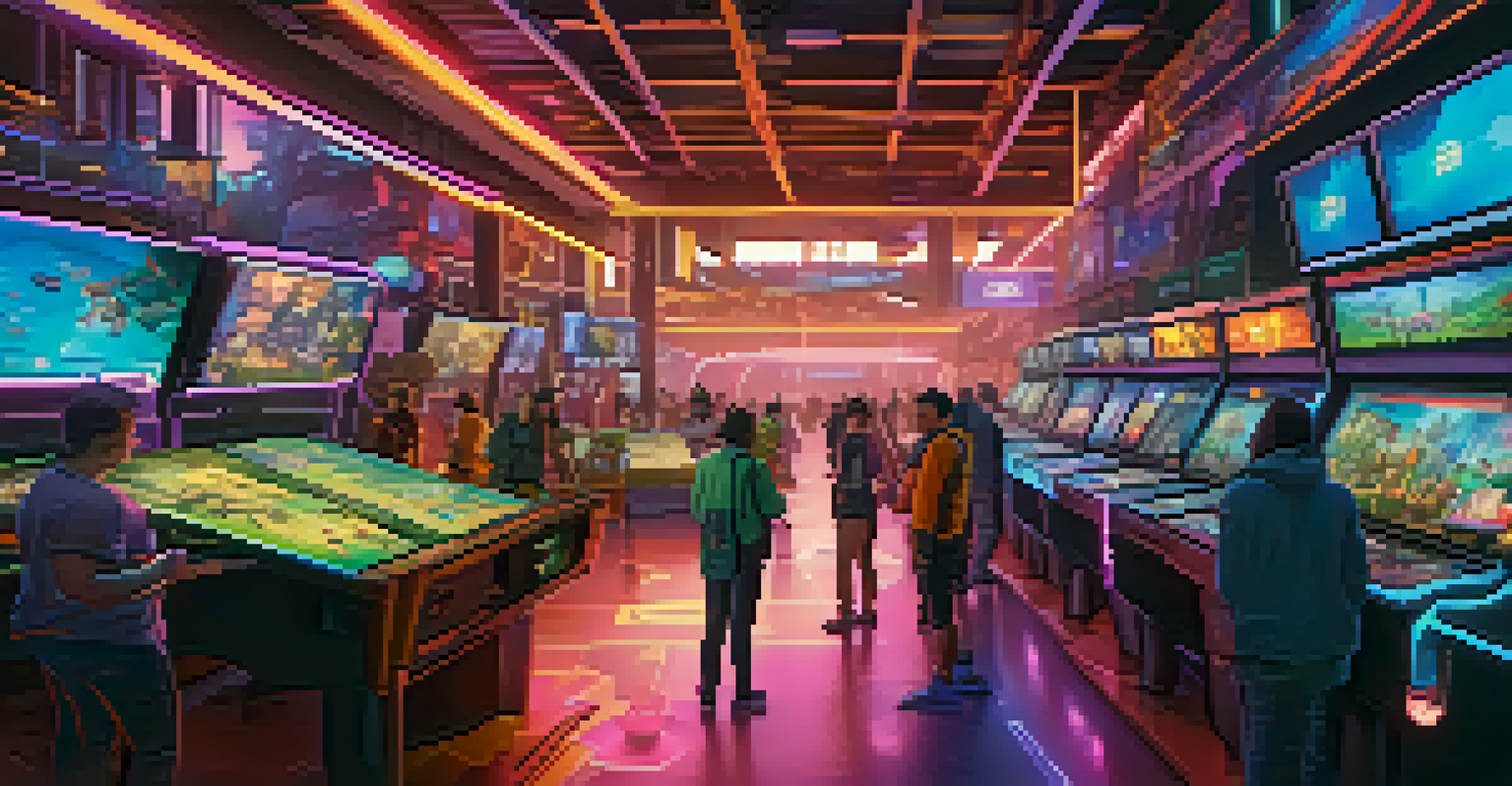Emerging NFT Market Trends: What to Watch in 2024

Rise of Utility NFTs: Beyond Collectibles
As we step into 2024, the NFT landscape is shifting towards utility-driven assets. Unlike traditional NFTs that focus solely on ownership of digital art or collectibles, utility NFTs offer real-world benefits, such as access to exclusive content or services. For instance, a musician might release NFTs that grant holders VIP concert access or backstage passes.
NFTs are not just digital assets; they are keys to experiences, communities, and ownership in ways we’ve never seen before.
This trend highlights the evolution of NFTs from mere digital tokens to integral components of user engagement and loyalty programs. Companies are beginning to recognize that NFTs can serve as powerful tools to enhance customer experience and retention. As more brands adopt this approach, we can expect a surge in innovative utility applications.
Investors should pay close attention to projects that prioritize real-world applications, as these NFTs are likely to hold more long-term value. The combination of digital ownership and tangible benefits creates a compelling reason for consumers to invest, setting the stage for a robust and dynamic market.
Environmental Sustainability in NFT Creation
Sustainability is becoming a crucial consideration in the NFT space. With the environmental impact of blockchain technology under scrutiny, many creators are exploring eco-friendly alternatives. In 2024, we can expect a significant emphasis on NFTs built on energy-efficient blockchains, such as those utilizing proof-of-stake mechanisms.

For instance, some platforms are already offsetting their carbon footprints by investing in renewable energy projects. This shift not only addresses environmental concerns but also attracts a growing demographic of eco-conscious investors. By prioritizing sustainability, projects can stand out in a crowded market.
Utility NFTs Enhance User Engagement
In 2024, utility NFTs are emerging as valuable assets that offer real-world benefits, reshaping customer loyalty and experience.
As consumers increasingly demand responsible practices from brands, those in the NFT space must adapt to these expectations. The projects that successfully incorporate sustainability into their business models will likely gain a competitive edge, appealing to a more conscientious audience.
Greater Integration of NFTs in Gaming
The gaming industry continues to be a significant driver of NFT adoption. In 2024, we will see an even deeper integration of NFTs into gaming ecosystems, allowing players to truly own in-game assets. This shift not only enhances the gaming experience but also creates new revenue streams for developers and players alike.
The future of NFTs lies in their ability to create real-world value and foster genuine connections between brands and their customers.
For example, players may buy, sell, or trade unique characters, skins, or items as NFTs, giving them real-world value. This concept of 'play-to-earn' is gaining traction, enabling gamers to monetize their time and skills. As gaming communities embrace this model, we can expect a surge in innovative game designs and experiences.
Investors should keep an eye on gaming projects that are pioneering the use of NFTs. Those that successfully combine engaging gameplay with robust NFT economies will likely attract a loyal user base, further driving market growth.
NFTs in the Metaverse: A Virtual Gold Rush
The metaverse is not just a buzzword; it's a rapidly growing virtual environment where NFTs are playing a vital role. In 2024, we can anticipate a surge in virtual real estate transactions and digital asset ownership within metaverse platforms. This trend transforms how individuals interact with digital spaces and their contents.
For instance, owning a virtual property can come with unique advantages, such as hosting events, selling digital goods, or even generating passive income through advertising. As more users flock to the metaverse, the demand for NFT-based assets will likely skyrocket, creating a virtual gold rush.
Sustainability Drives NFT Innovations
Environmental considerations are pushing NFT creators to adopt eco-friendly practices, attracting a conscientious audience.
Investors should be aware of the opportunities presented by metaverse projects that incorporate NFTs. Those that create immersive experiences and foster community engagement will stand out and attract attention in this burgeoning market.
NFT Fractionalization: Making Ownership Accessible
Fractionalization is emerging as a game-changer in the NFT market, allowing multiple investors to own a fraction of a high-value asset. This trend not only democratizes access to expensive NFTs but also opens new avenues for investment. In 2024, we can expect fractional ownership platforms to gain popularity, making it easier for everyday consumers to participate in the NFT space.
For example, an expensive piece of digital art can be divided into smaller, more affordable shares, enabling a larger audience to invest. This approach lowers the entry barrier and encourages a more diverse range of investors to engage with NFTs. Additionally, fractionalization can enhance liquidity, as these shares can be traded on various platforms.
As this trend continues to grow, savvy investors should explore fractional NFTs as a way to diversify their portfolios. The ability to own a piece of a high-value asset while sharing risks with others is an attractive proposition in the ever-evolving NFT landscape.
The Role of AI in NFT Art Creation
Artificial Intelligence (AI) is making waves in the NFT art scene, and its influence will only expand in 2024. AI-generated art is gaining traction as artists and creators use algorithms to produce unique and captivating pieces. This technology not only pushes creative boundaries but also raises questions about authorship and ownership in the digital realm.
For instance, artists can collaborate with AI to generate art that reflects their style while incorporating algorithmic creativity. This fusion results in pieces that are not only visually stunning but also rich in narrative and meaning. As AI tools become more accessible, we can expect an explosion of innovative NFT art.
Legal Frameworks Shape NFT Market
As NFTs mature, clearer legal guidelines regarding ownership and copyright are becoming essential for creators and investors alike.
Investors should keep an eye on the intersection of AI and NFTs, as this trend could lead to a new genre of digital art that captures the imagination. Projects that harness AI effectively will likely attract attention and investment as they redefine what art can be in the digital age.
Legal Developments Shaping the NFT Landscape
As the NFT market matures, legal considerations are becoming increasingly important. In 2024, we can expect heightened scrutiny from regulators and lawmakers, leading to clearer guidelines surrounding ownership, copyright, and intellectual property rights. This legal framework will provide both creators and investors with greater clarity and protection.
For example, recent lawsuits have highlighted the need for clearer definitions of what ownership means in the digital world. As the legal landscape evolves, projects that prioritize compliance and transparency will gain credibility and trust among users. This focus on legal considerations can also help mitigate risks for investors.

Savvy investors should stay informed about the legal developments affecting the NFT space, as these changes can significantly impact the market. Understanding the implications of evolving regulations will be essential for navigating the NFT landscape responsibly and successfully.